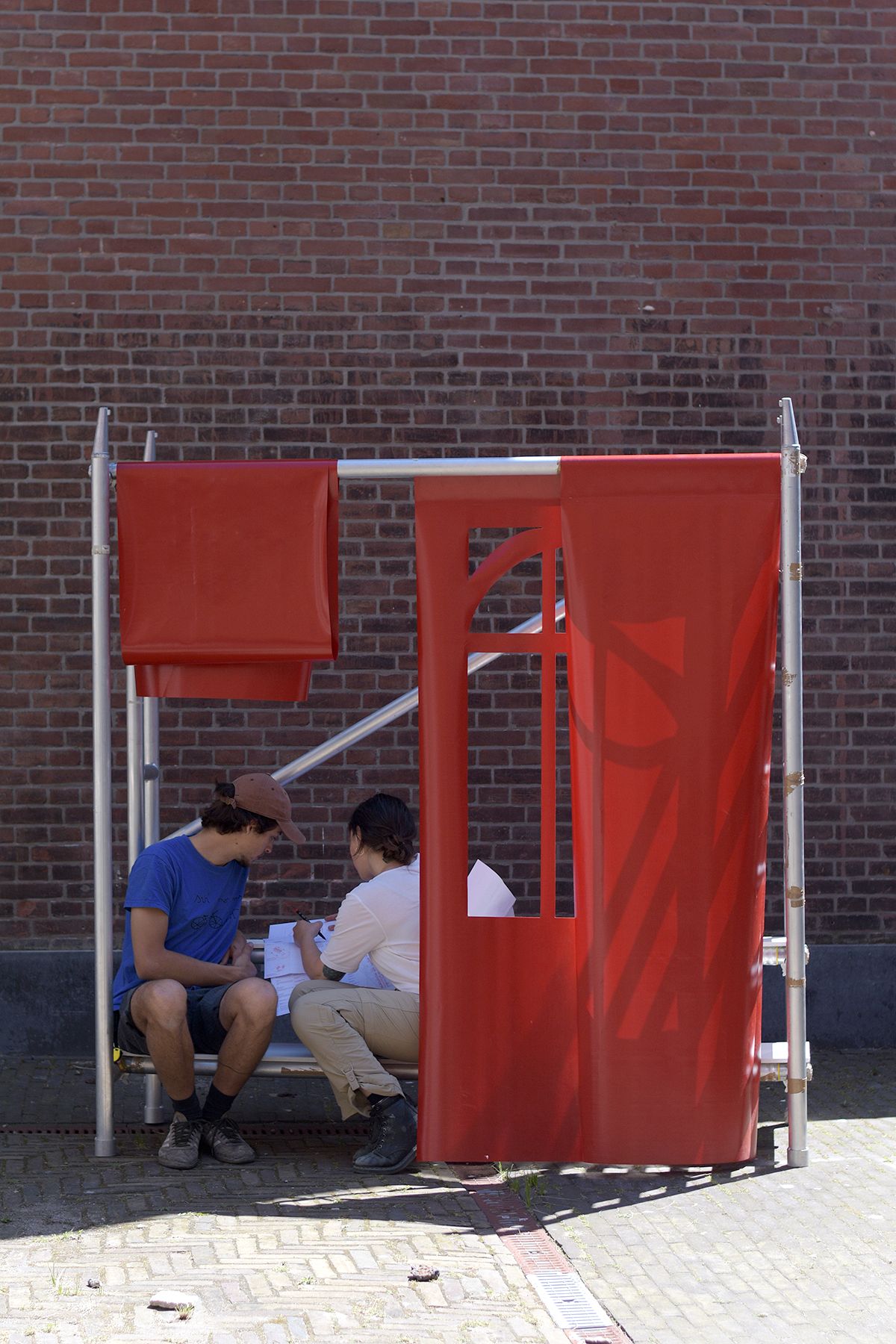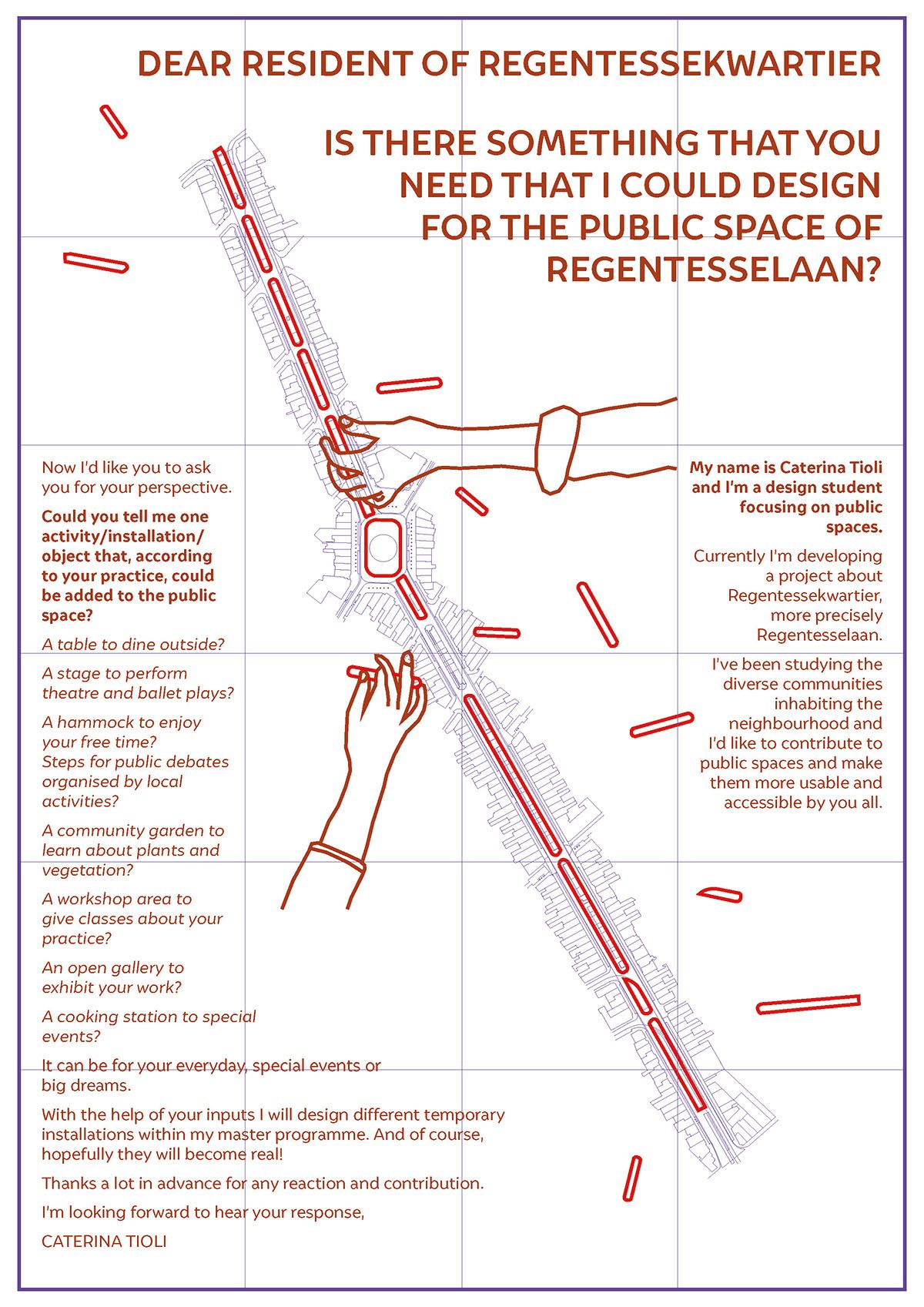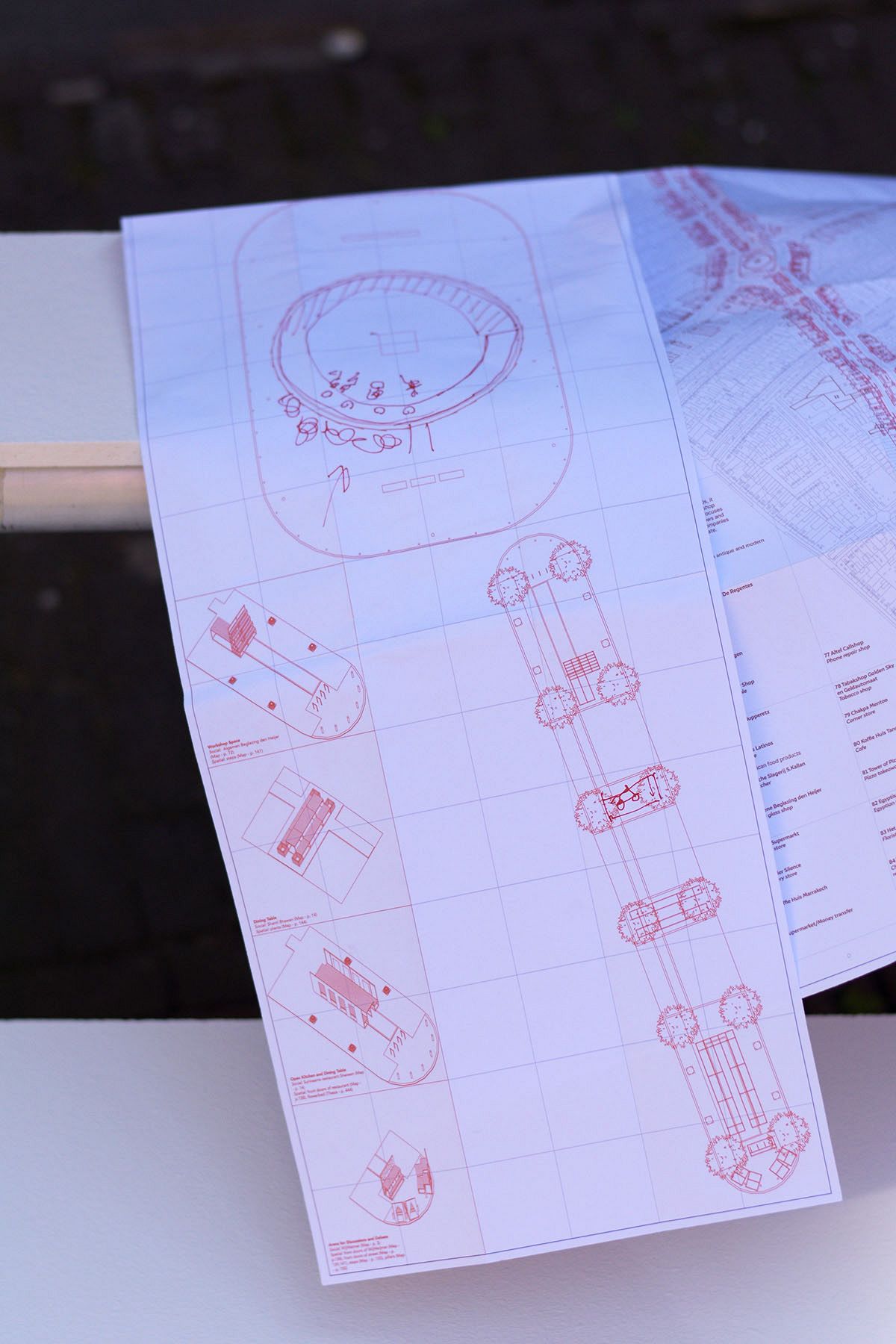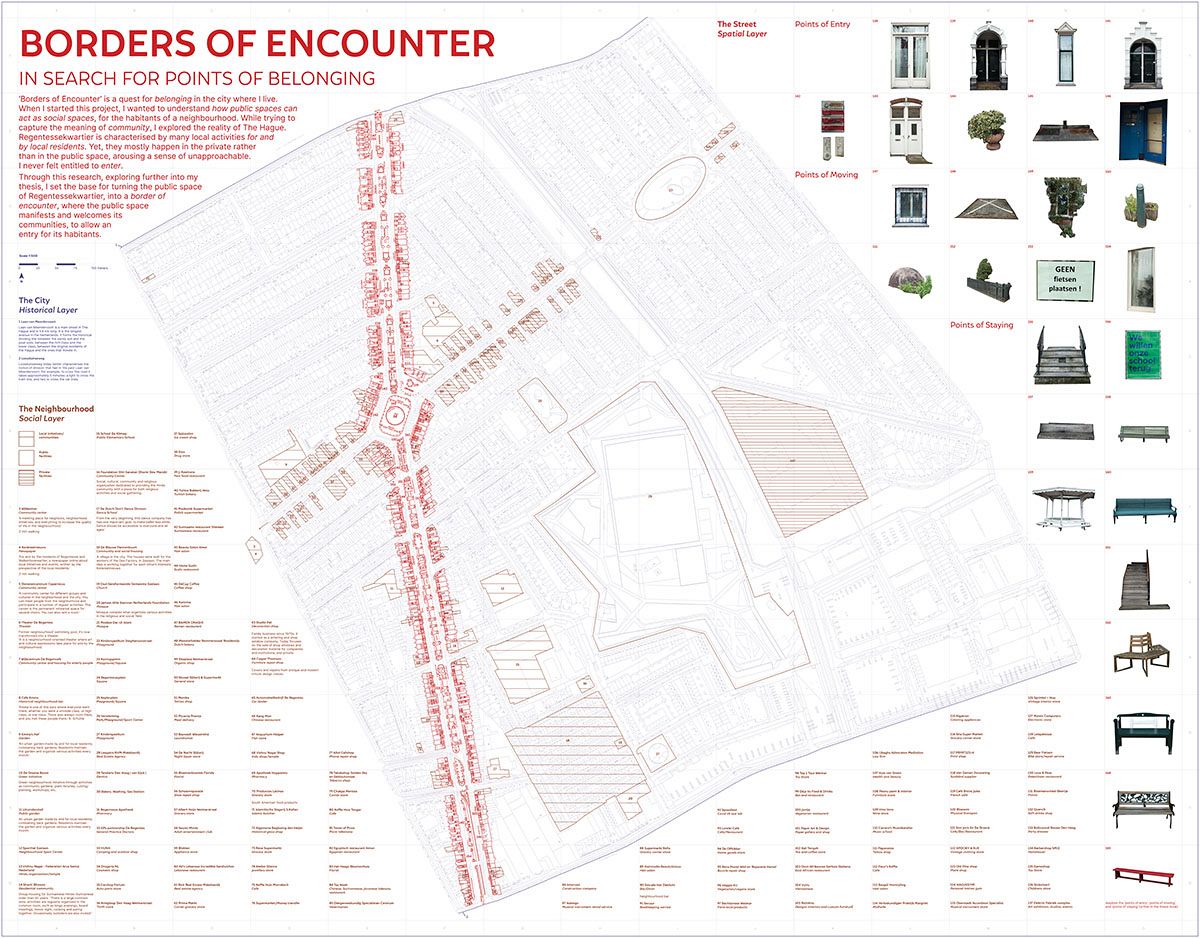
‘Borders of Encounter’ is a quest for belonging in the city I live, and to understand how public spaces can act as social spaces for the habitants of a neighbourhood. For me, they should be the first focus when we aim at ‘belonging’: by being open and accessible to all, they become places where we are exposed to ‘others’, allowing us to see and hear from different positions, revealing our differences.
In my research I explored the reality of The Hague. Since its very foundation the city has been marked by segregation. Within this urban fragmentation, I explored the concept of ‘border’ as the area where the interaction within different communities increases. I identified the neighbourhood - Regentessekwartier - as ‘border’; in its diversity, it is characterised by many local activities ‘for and by local residents'. Yet, they mostly happen in the private rather than in the public space, arousing a sense of unapproachable.
My exploration of Regentesselaan, which crosses the neighbourhood from north to south, where I live exactly in the middle, gave the base for defining the spatial elements that would allow or deny me to encounter with ‘others’. I identified three categories: “points of entry” considers elements that invite or reject someone from entering; “points of moving” describes elements that allow movement, physically or visually, or deny it; “points of staying” relates to elements that allow me to remain.
With this research, which grants me to become an expert, I set the tools needed for initiating a conversation with the residents of my neighbourhood, in order to turn the public space in the neglected area between the car roads on Regentesselaan, into a border of encounter. By connecting dots between the social layer and the spatial layer, I initiate a series of design proposals of possible local interventions constructed of temporary elements.


